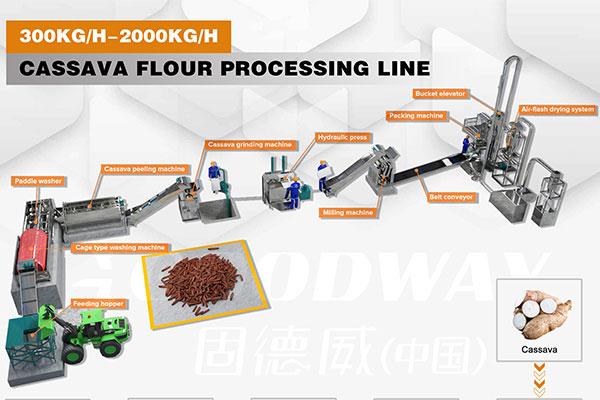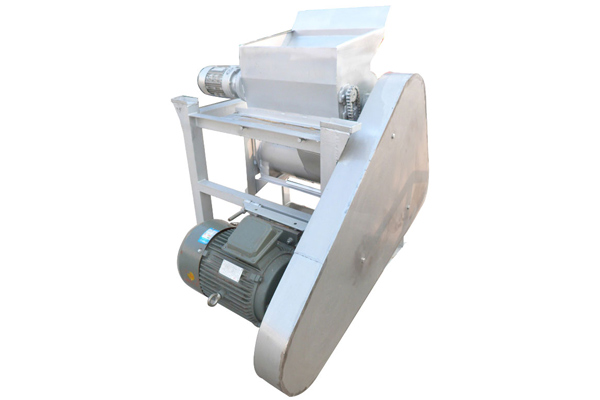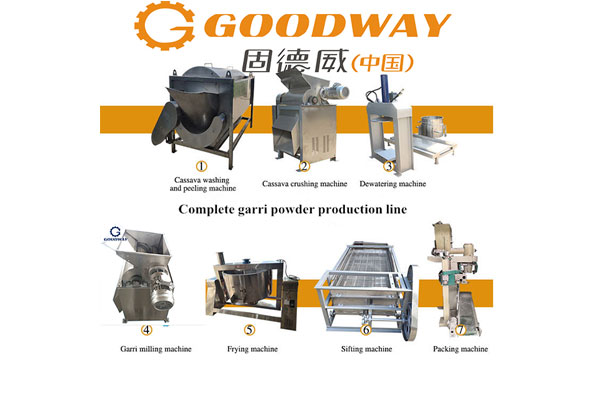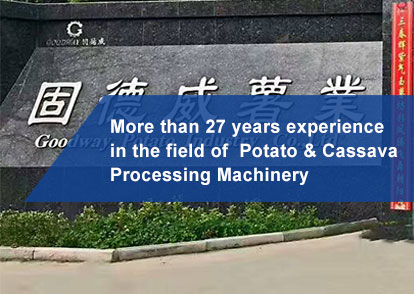Automated tapioca starch processing starts at the same time in multiple stages, and is composed of different starch equipments to form an assembly line. The one-stop production process is completed in sequence from cleaning, crushing and filtering, desanding and desilting, concentration and refining, dehydration and drying all work.
Today, Nanyang Goodway Machinery & Equipment focuses on explaining the nature, importance and process principle of each section.
Ⅰ. Cleand transportation of raw materials for tapioca starch processing
Cleaning refers to the process of removing silt, sand, soil, stones, weeds and other impurities from the surface of materials by mechanical or manual methods.
The purpose of cleaning is to remove impurities and ensure the pure quality and taste of starch. It is also the key to eliminate hidden dangers and ensure the safe and continuous production of subsequent tapioca starch processing. There are various types of cleaning machines and cleaning processes, you can choose according to your needs.
The transportation, transfer, storage, etc. between each section are equally important. Automatic processing is to transform the steps that were originally completed by manpower into machine operations, especially in the raw material conveying work. Conveying equipment such as hoppers and conveyor belts greatly increase the processing capacity.
Ⅱ. Crushing and filtration of tapioca starch processing
1. Crushing: The cleaned raw materials are lifted and transported to the crushing section. There are many ways of crushing raw materials, such as filing type, hammer type, overflow type, extrusion filter type and so on. The purpose is to fully crush the raw materials and release the starch granules in them. The difference is that the degree of crushing is different, and the filtration rate of free starch obtained is different.
When the raw material is crushed, the process water is introduced at the same time, and the state of the material is a mixture of starch and water, which we call coarse starch slurry. It also contains a large amount of crude fiber and other substances, and needs to be filtered and purified by multiple steps.
2. Filtration: The crude starch slurry contains starch, potato residue, crude fiber, fine fiber and protein. In the processing and filtration of tapioca starch, a variety of starch filtration equipment, such as centrifuges, fine filters and microfilters, are required to effectively separate and filter above materials.
The filter has a high mesh number and excellent purification and filtration effect. Different filtration equipment has different sieve holes and sieve diameters, which can effectively separate and extract various impurities and improve the filtration effect. However, it is easy to be blocked by various impurities, especially protein, so it needs to be separated. The filter screen intercepts other impurities, and the filtered starch milk flows into the next section.
Ⅲ. Desanding and desilting of tapioca starch processing starch milk
This section can also be called starch purification and impurity removal. The purpose is to remove fine grit and sediment residues, improve the purity of starch, and ensure the taste of starch.
Ⅳ. Concentrated and refined of tapioca starch processing starch milk
Although a large amount of impurities have been removed through the previous separation, filtration and purification processes, it is impossible to completely separate and remove fibers and proteins, so starch milk needs to be refined to use water to wash away the non-starch substances in it, such as oil powder, yellow powder, pectin, etc., to improve starch purity, precision and whiteness.
Starch refining needs to use a professional starch cyclone for operation. In order to more easily detect the discharge concentration of the cyclone, the discharge of the cyclone generally needs to use a mass flow meter and a regulating valve to interlock.
Ⅴ. Starch dehydration of tapioca starch processing
The concentrated and refined starch milk contains a lot of water, and it needs to be dehydrated to obtain wet starch. Starch dehydration generally adopts vacuum drum and suction filtration to dehydrate starch, which can effectively improve the clarity of starch. The moisture content of dehydrated starch is about 40%.
Ⅵ. Starch drying of tapioca starch processing
The dehydrated wet starch is transported through the conveyor belt into the airflow drying system. The starch airflow drying adopts negative pressure drying. The cold air passes through the filter to filter out the dust in the air. The pure air enters the heat exchanger, and the air passing through the heat exchanger, causing the temperature rises to a certain temperature.
The wet starch processed by tapioca starch enters the lifter through the feeder (using frequency conversion control), and then enters the drying pipeline with hot air after being accelerated by the lifter. Heat is transferred and the starch is dried.
Dried starch and moist hot air enter the cyclone separator. The starch is separated from the air, and then collected by the screw conveyor and discharged to the next packing section through the air closer. The hot and humid air is extracted by the fan and discharged to the outside through the drying system.

 EN
EN
 fr
fr  es
es  it
it  pt
pt 







